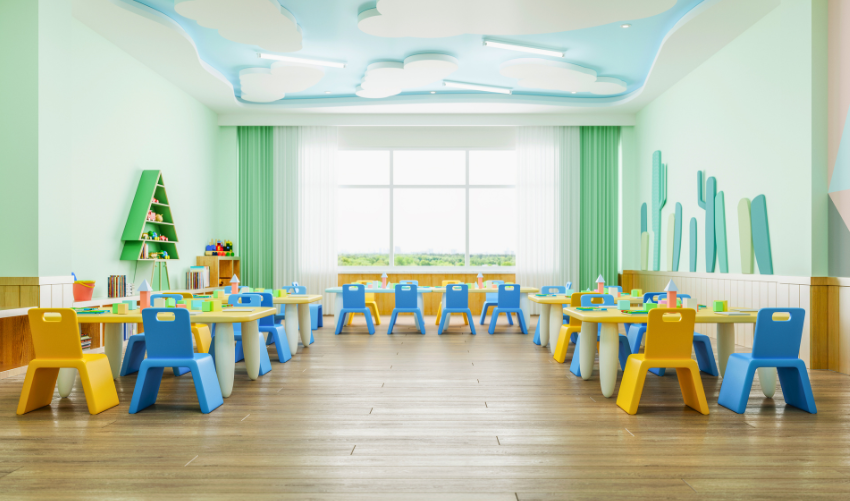Choosing the right time for your child to start preschool can feel overwhelming. With so many factors to consider, it’s natural to have questions.
This guide we’ll explore the preschool starting age across various countries, helping you understand what options are available for your little one.
The Foundation Of Early Learning: Understanding Preschool
Preschool serves as the foundation for early learning. It shapes children’s social, emotional, and cognitive skills. Different countries have varying starting ages for preschool. This influences children’s readiness for formal education.
What Is “Preschool” Anyway?
Preschool generally refers to early childhood education before kindergarten. It focuses on the development of young children through play-based activities. This learning environment nurtures essential skills for future academic success. Preschool helps children develop:
- Social skills through interaction with peers.
- Emotional skills by managing feelings and building confidence.
- Cognitive skills through problem-solving activities.
Preschool aims to prepare children for more formal schooling. It impacts social integration and developmental milestones. Early exposure to structured learning helps children adjust when they enter kindergarten.
Why Does The Starting Age Matter?
The starting age for preschool is significant for several reasons. It influences government policies and parental choices. Countries with early preschool programs often see better educational outcomes. Starting preschool at an earlier age can provide children with:
- Increased exposure to learning environments.
- Better preparation for academic challenges.
- Opportunities to develop social networks.
Research shows that early education impacts developmental milestones. Children who attend preschool tend to have stronger cognitive skills. They also show improved social integration. The right starting age can lead to long-term benefits. Parents should consider their child’s readiness and individual needs.
European Approaches To Early Education
In Europe, each nation has its unique approach to early education. This section explores how different European countries view preschool, focusing on their systems, philosophies, and policies.
France: A Strong Public System
In France, mandatory schooling begins at age 3. This is when children enter the “École maternelle” (preschool). The French system views preschool as a vital part of early education. It prepares children for their future schooling.
The “École maternelle” is a core part of the public education system. Here are some key features:
- Focus on social skills and basic education.
- Structured learning through play and activities.
- Teachers trained in early childhood education.
Preschools in France are widely accessible. They are free and often located close to homes. The goal is to promote equal opportunities for all children.
Overall, French preschool prioritizes developmental skills. It ensures children are ready for their next educational steps.
Germany: Varied Options And Kindergarten Culture
Germany offers varied options for early education. “Kindergarten” generally serves children aged 2-4. This system emphasizes play-based learning. Attendance is not mandatory for preschool, allowing families to choose.
In Germany, parents can choose from several types of preschools:
- Public kindergartens
- Private kindergartens
- Family-based care
Each option caters to different needs. Public kindergartens are popular and often subsidized by the government. They focus on social skills, creativity, and early literacy.
German preschools encourage children to explore and learn at their own pace. This approach builds a strong foundation for later learning.

Sweden: Early Access And Play-based Learning
In Sweden, children have the right to attend preschool from age 1. The Swedish system emphasizes play-based learning. This method fosters creativity and social development.
Key elements of Swedish preschools include:
- Strong emphasis on outdoor play.
- Focus on children’s interests and ideas.
- Encouragement of teamwork and cooperation.
Preschools in Sweden are often integrated into the community. Many are publicly funded, ensuring accessibility for all families. This system aims to create a nurturing environment for children.
Swedish educators play a crucial role. They guide children through activities that promote growth and exploration. The goal is to prepare children for school and life.
Russia: Structured State Preschools
In Russia, structured state preschools typically cater to children aged 3-7. These preschools provide a full-day program. This includes meals and naps, ensuring children’s needs are met.
The Russian preschool system focuses on:
- Academic readiness
- Social skills development
- Physical development through activities
State preschools are widely available. They often have a structured curriculum that prepares children for school. Teachers guide children through various subjects, including language and math.
The emphasis is on creating a disciplined environment. This approach helps children adjust to the demands of formal education.
North And South American Perspectives On Preschool
In North and South America, the approach to preschool differs significantly by country. Each nation has its own rules and cultural perspectives on early childhood education. This section explores how preschool age varies in the United States, Mexico, and Brazil.
United States: Diverse And Optional
In the United States, preschool generally starts between ages 3 and 5. The age at which a child begins preschool varies greatly by state and individual program. Many families have the choice to send their children to preschool or not, making it often not mandatory.
Preschools can be found in various forms, including:
- Public preschools
- Private preschools
- Cooperative preschools
- Montessori schools
Many parents look for programs that fit their child’s needs. Here are some key points about preschool in the United States:
| Aspect | Details |
|---|---|
| Start Age | 3 to 5 years |
| Mandatory | No, varies by state |
| Types | Public, Private, Cooperative, Montessori |
This variety allows families to choose a preschool that aligns with their beliefs and needs.
Mexico: Mandatory Preschool
In Mexico, preschool (Preescolar) is compulsory for children aged 3 to 5. The government considers early education a national priority. This ensures that all children attend at least one year of preschool.
The structure of preschool in Mexico is as follows:
- Preschool is divided into three levels:
- First level: Age 3
- Second level: Age 4
- Third level: Age 5
- Public and private preschools are available.
Preschool programs focus on social skills, basic literacy, and numeracy. They prepare children for primary school. This early education system aims to provide a strong foundation for lifelong learning.
Brazil: Mandatory For Older Preschoolers
In Brazil, preschool is mandatory for children aged 4 and 5. The law requires children to attend preschool before entering primary school. Children aged 0-3 can attend nursery (creche), but it’s optional.
The Brazilian preschool system includes:
- Two main age groups:
- Preschool for ages 4-5
- Optional nursery for ages 0-3
- Public and private options are available.
Preschool programs focus on play-based learning. They encourage creativity and social interaction. This approach helps children develop important skills before they start formal schooling.
Asia, Africa, And Oceania: Diverse Systems And Growing Emphasis
In Asia, Africa, and Oceania, different systems reflect diverse cultures and values. Countries have unique approaches to early childhood education, emphasizing flexibility and accessibility. Parents often navigate various options that suit their child’s needs.
Japan: Kindergarten And Daycare Options
In Japan, early childhood education plays an important role. The country offers various options for parents. Kindergarten typically serves children aged 3 to 6. Daycares, known as hoikuen, can accept infants as young as 56 days old.
- Kindergarten: For children aged 3 to 6.
- Daycare (Hoikuen): Accepts infants from 56 days old.
- Preschool Attendance: Highly encouraged, not compulsory.
Kindergartens focus on social skills, basic education, and emotional development. They provide a structured environment for young learners. Daycares offer more flexibility for working parents. They focus on care and early learning for younger children. This system allows families to choose the best fit for their situation.
India: National Policy And Flexible Starting Ages
India’s approach to preschool is shaped by the National Education Policy 2020. This policy suggests a foundational stage starting at age 3. However, starting ages can vary by region and family choice. Many preschools cater to children from ages 3 to 6, but flexibility is common.
| Age Group | Type of Program | Notes |
|---|---|---|
| 3-4 Years | Preschool | Focus on play-based learning. |
| 4-5 Years | Pre-Kindergarten | Preparation for formal schooling. |
| 5-6 Years | Kindergarten | Transition to primary education. |
Preschool attendance is not compulsory. Yet, many families enroll their children. They value early education for future success. Parents have options like government-run schools and private institutions. This diversity supports different educational philosophies.
South Africa: Pre-grade R And Grade R
South Africa offers a structured preschool system. Preschools generally cater to children aged 4-6. The system includes “Pre-Grade R” for 4-year-olds and “Grade R” (the reception year) for 5-6-year-olds. This setup prepares children for primary school.
- Pre-Grade R: For children aged 4.
- Grade R: For children aged 5-6.
Early childhood education in South Africa is essential. It aims to develop social, emotional, and cognitive skills. While preschool is not compulsory, it is highly encouraged. Many parents recognize its importance in a child’s development.
Overall, each country showcases its unique educational philosophy and approach to early childhood education. Parents can find a variety of options that fit their child’s needs and family circumstances.





Leave a Reply